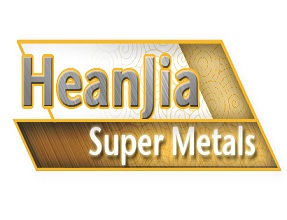You are here: home > Nichrome News > Heating wire measurement standards
Product (738)
- Pure Nickel Products (38)
- Incoloy Products (74)
- Inconel Products (72)
-
FeCrAl Product
(99)

-
Nichrome Products
(68)

- Monel Products (36)
- Hastelloy Products (49)
- Nickel Iron Alloy Product (59)
-
Nickel Copper alloys
(47)

- Nonferrous Metal Product (27)
-
Resistance Wire
(90)

- Stainless Steel Product (42)
- Mesh Demister (20)
- Others (17)
Product Forms (14)
Quality Certificate (11)
Learning Gallery (30)
Incoloy News (9)
Inconel News (22)
Molybdenum News (7)
Nikrothal News (4)
Nichrome News (13)
Titanium News (2)
Nickel News (8)
Alloys House (30)
Tools (27)
Nickel alloy News (30)
Latest Buzz (30)
nickel chrome copper iron alloys news (28)
Credit Report
Products Index
Company Info
Heanjia Super-metals Co., Ltd. [China (Mainland)]
Business Type:Manufacturer, Trading Company
City: Beijing
Province/State: Beijing
Country/Region: China (Mainland)
Nichrome News
Heating wire measurement standards
The high temperature heating resistance nichrome wire is employed for the heating purposes when the consistent resistance is not essential. The nichrome wire consists of 80% nickel and 20% chromium can not be soldered easily and on the industrial scal, the phosphoric acid is used to solder the wire. Since the solder melts upon heating the nichrome is often welded to other meals to establish the electric joints. When nichrome is compared with constantan, it is tougher than constantan and cannot be bent easily also nichrome resistance wire offers almost twice times of resistance per meter.
The wire can be employed in the elevated temperature ranges and it gets bright red. The wire's resistance also increases with temperature. The nichrome wire is classified in the different grades on the base of its applications.
The wire can be employed in the elevated temperature ranges and it gets bright red. The wire's resistance also increases with temperature. The nichrome wire is classified in the different grades on the base of its applications.
The wire is severely oxidized to become insulated and obtains special black by the certain chemical treatment. The wire's diameter is measured in millimeter (mm) and industrially its size is measured in gauge. Commonly the wire size is measured by following two gauge systems: Standard Wire Gauge (SWG) and Brown & Sharp (B&S). Among these two, SWG is commonly used.
Besides of Nichrome, Karma is another wire used for obtaining high resistance per meter. Karma offers more resistance than nichrome. It is employed to make resistors and potentiometer with more ohmic values. The size of the wire is very small that lower than the diameter of human hair.
The Tungsten high temperature resistance wire is third type of heating wire employed in making lamps to become bright at the white hot temperature ranges. Tungsten offers the highest resistance and it is almost impossible to solder the metal. It is used to weld on other metallic sections to establish the electrical connections. Tungsten wire can be seen upon analyzing the lighting lamp where the filament is welded to support the metal wires.
Since the metallic parts expand upon heating therefore the assisting wires in the lighting lamps are made of special alloy that doesn't get oxidized on heating and it is made to expand at the temperature when the glass melts. Therefore the wires are insulated in the molten glass to establish the wire's electric connection. In case, if the wire expands and contracts asymmetrically than the glass or if the wire obtains an oxidized coating, then the glass cannot join and insulate the wire correctly.
In order to obtain the controlled temperature expansion of metallic wires, a certain alloy made of platinum and iridium that does not enlarge with an increase in temperature. This alloy has been using from several years in the various standards of measurement.
The resistance heating wire is also used in the special heating applications like heating equipments where the heat is produced at the high temperatures and used in cooking food or industrial uses like furnaces.
Pre Page:
How to rate the heating equipments
Next Page:
Application fields of Heating resistance...
.gif)


